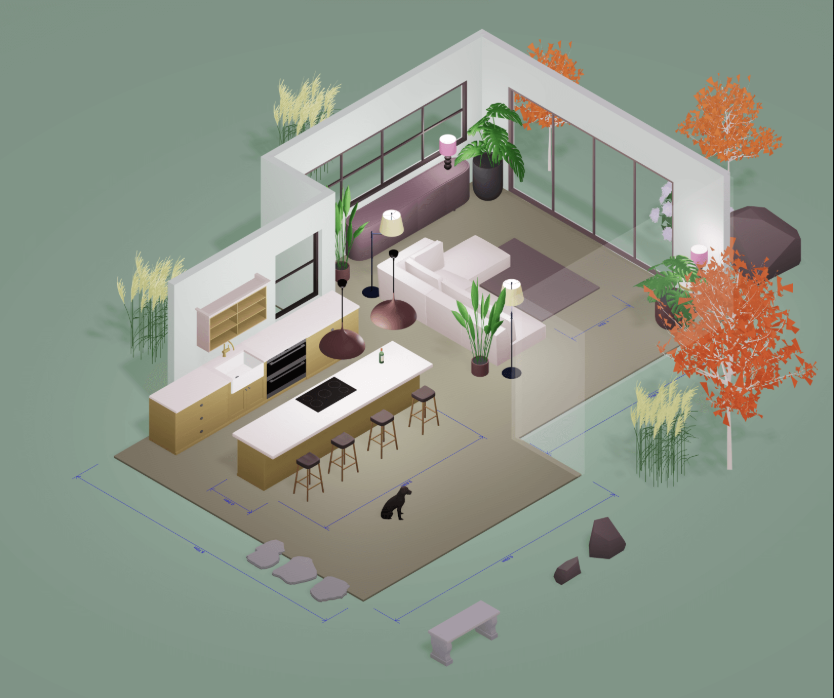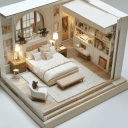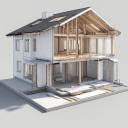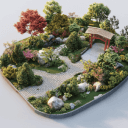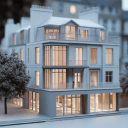Lighting can make or break the mood and functionality of any interior. A well-thought-out lighting layout not only highlights your design elements but also ensures the space is inviting and practical at all times of day. Achieving this balance of natural and artificial light used to be a challenge, but modern 3D tools like
Arcadium 3D
are transforming how interior designers create and present lighting plans.
In this guide, written from the perspective of a 3D room design professional, we’ll explore essential tips for using Arcadium 3D to elevate your lighting layouts for client presentations.
Explore Our Tool
Why Lighting Layout Matters in Interior Design
Lighting is a cornerstone of interior design because it directly influences how a space looks and feels. The right lighting can make a small room feel open or give a large room a cozy ambience. Conversely, poor lighting planning can leave beautiful designs looking flat or impractical.
For instance, forgetting to include sufficient daylight or relying on a single harsh overhead lamp can create unwelcoming, gloomy spaces. In fact, studies show that homes with inadequate natural light can incur up to 25% higher energy costs because occupants must use artificial lighting more often. This underscores why designers must plan for both natural sunlight and artificial illumination from the start.
A thoughtful lighting layout typically layers different types of light to serve various purposes. Interior designers distinguish ambient, task, and accent lighting as the trio that ties a room’s atmosphere together. Ambient lighting is the general, overall illumination that makes a space usable (e.g. ceiling fixtures or recessed lights). Task lighting is focused on specific areas for activities like reading, cooking, or working (desk lamps, under-cabinet lights, vanity lights, etc.).
Accent lighting is more decorative or directional, used to highlight artwork, architectural features, or to add visual drama (spotlights, wall sconces, LED strips). A successful design balances these layers: ambient light for basic visibility, task lights where precision is needed, and accent lights to create depth and highlight focal points. At the same time, natural light should be maximized during the day through well-placed windows and openings.
Natural vs. Artificial Light:
It’s crucial to account for how sunlight enters your space (its direction, intensity, and changes throughout the day) and how artificial lights will supplement after dusk. Many designers make the mistake of neglecting natural lighting during planning – placing too few or poorly positioned windows – which leads to dim interiors and overreliance on electrical lights.
A bright, sunlit room in the daytime not only looks more vibrant, but also saves energy. Then, as evening falls, a mix of ambient and accent lighting can preserve a warm, inviting atmosphere. A solid lighting plan considers both scenarios.
Given the importance of lighting, interior designers need tools that help visualize and adjust lighting before any real construction or installation happens. This is where Arcadium 3D truly shines. By leveraging Arcadium’s 3D design environment, you can experiment with different lighting configurations and immediately see their impact on the space – ensuring that your final design is both beautiful and practical, day or night.
Arcadium 3D – Transforming the Lighting Plan Design Process
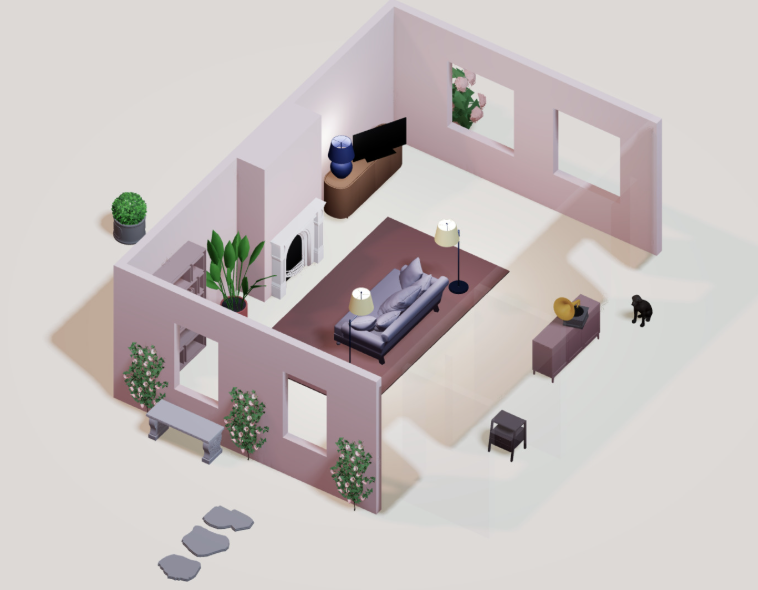
Arcadium 3D is a game-changer for creating lighting layouts in interior design. Traditionally, crafting a detailed lighting plan meant interpreting 2D drawings or mentally visualizing how light spreads in a room – a process prone to guesswork.
Arcadium 3D changes the game by letting you build a realistic 3D model of your room and then play with the lighting in real time. The platform is built with interior designers and architects in mind, yet it’s intuitive enough that even beginners can use it to make professional-quality plans.
In other words, Arcadium offers professional-grade features in an accessible, user-friendly package, empowering anyone to design a well-lit space without a steep learning curve. Here’s how Arcadium 3D helps transform your lighting layouts:
Drop in a Variety of Light Fixtures:
Arcadium’s extensive model library includes a wide range of lighting fixtures you can literally drag and drop into your design – from ceiling pendants and chandeliers to floor lamps, recessed spotlights, and wall sconces. This means you can plan every source of light in the room exactly where it’s needed.
Want a pendant over the dining table and cove lights along the ceiling? Just select them from the library and place them in your 3D scene. You’ll instantly see how they fit within the space and relate to furniture and decor.
Realistic, Adjustable Lighting Effects:
Unlike static floorplan tools, Arcadium simulates lighting dynamically. You can turn lights on or off and tweak each fixture’s brightness and even color hue to mimic different bulb types (warm vs cool) or dimming levels. For example, if you add a lamp on a side table, you can adjust its intensity to see how a softer glow versus a bright light affects the room’s mood.
All these changes update in real time in the render – there’s no waiting for a long render process. Arcadium’s engine is fast, so lighting adjustments appear immediately, allowing for rapid experimentation.
Sunlight Simulation:
Planning natural lighting is effortless with Arcadium 3D. The software treats windows and openings as light sources too – add a window and you’ll notice the room get brighter. You can adjust the environment “sun” settings (time of day or sun orientation) to simulate how sunlight will stream in at different hours.
This feature is incredibly useful for architects and designers who want to show a client, for instance, what the living room will look like in the morning versus late afternoon. By encouraging strategic window placement and offering these sun-controls, Arcadium emphasizes the importance of natural lighting in design – a critical consideration sometimes overlooked in other tools.
In fact, Arcadium’s interface guides users to place windows thoughtfully for optimal daylight, whereas in some modeling software this might be an afterthought.
High-Quality Visuals with Instant Feedback:
Arcadium 3D delivers high-definition 3D visualizations of your room as you design, which means you’re effectively “walking through” a realistic model while tweaking the lighting. The combination of real-time rendering and realistic light behavior helps you get a true feel for the ambiance each lighting choice creates.
If a corner still looks too dark even after adding lamps, you’ll notice it in the 3D view and can address it by adding another light or changing a fixture’s location. This instant feedback loop lets designers optimize lighting layouts quickly, ensuring no spot is inadvertently left in shadow (unless intended for effect!).
The realism Arcadium provides – with lights casting shadows and illuminating surfaces – takes the guesswork out of lighting design decisions.
User-Friendly and Fast:
From a workflow perspective, Arcadium’s simplicity is a major asset when working on lighting plans. There’s no coding or complex CAD commands needed to place or adjust lights – it’s as easy as clicking and dragging, or sliding a brightness slider. As a result, iterating on a design is fast.
You can try out multiple lighting setups (say, compare a central chandelier vs. track lighting system) in a single session. Arcadium “dramatically cuts the complexity” of 3D design tasks, allowing you to focus on creativity rather than fighting with technicalities. And since it runs in your web browser with no installations, you can jump into designing on any computer and have your full project (including all lighting settings) at your fingertips.
Most importantly, Arcadium 3D makes advanced lighting design accessible to everyone. As a professional, you get robust tools to create precise, beautiful lighting schemes. Meanwhile, if you’re a homeowner or a novice trying this yourself, Arcadium’s intuitive interface means you don’t need formal training to achieve great results.
It has been described by users as “the fastest and easiest 3D house modeling tool” available, and it lives up to that reputation. This democratization of 3D lighting design – putting a powerful online room designer in anyone’s browser – is part of what makes Arcadium 3D so transformative.
Explore Our Tool
Balancing Natural and Artificial Light with Arcadium 3D
A standout benefit of Arcadium 3D is how it enables designers to seamlessly integrate natural and artificial lighting strategies within one platform. Using an
online room designer
like Arcadium, you can visualize sunlight and electric lights together in your virtual space, which is invaluable for achieving a balanced lighting design. Let’s break down how to approach both aspects:
1. Maximize Natural Light:
Begin your layout by considering daylight. In Arcadium 3D, add windows, skylights, or glass doors to your model where you want natural light to enter. Thanks to Arcadium’s sunlight simulation, you’ll see the room brighten as you place these openings. Tip: Toggle the environment lighting settings (Arcadium lets you adjust the sun’s angle and intensity) to mimic different times of day.
This allows you to spot any issues—for example, if the north-facing studio might be too dim in the morning, or if a west-facing window causes glare on a workspace in the afternoon. You can then refine window size or placement (or plan for shading) accordingly.
By testing various sun positions, you ensure your design makes the most of available daylight and that key areas (like reading nooks or breakfast tables) have ample natural illumination at the right times. Remember, natural light adds vibrancy and saves energy, so Arcadium helps you strategically harness sunlight in the design phase.
2. Layer In Artificial Lighting:
Once you’re satisfied with the daylight plan, it’s time to add artificial lights to cover evening and nighttime needs (and to enhance daytime atmosphere). Arcadium 3D’s library of fixtures lets you incorporate all layers of lighting easily. Start with ambient lighting: perhaps recessed ceiling lights or a central pendant in each room for general illumination.
Place them in the model and observe in 3D how their light spreads. Next, add task lighting in functional areas: floor or table lamps near seating, pendant lights above kitchen islands, under-cabinet lights in the kitchen, a focused light above a desk, etc.
Arcadium allows you to move these lights around and adjust their brightness, so you can fine-tune their positions until, say, the kitchen counter is well-lit for cooking or the home office desk has no dark spots. Then sprinkle in accent lighting for depth: maybe wall washers highlighting a textured wall, LED strips behind a cove or under shelves, or a spotlight on a piece of art.
You can even experiment with colored lighting if the design calls for a creative touch – Arcadium supports changing a light’s hue to see effects (for instance, a cool blue accent light behind a planter for a modern vibe).
As you layer lights, Arcadium 3D effectively lets you layer the lighting visually too. You’ll see the combined effect of ambient + task + accent lights in one composite view. This is where the tool really helps in achieving balance: if turning on all your planned lights makes the space too bright or flat, you’ll notice and can adjust (maybe dim some accent lights for a cozier feel).
If there’s an area that still falls into shadow when it shouldn’t, you can address it by adding another light or increasing an existing light’s power. Arcadium’s real-time rendering encourages this kind of trial and error until you hit the perfect equilibrium.
By the end, you’ll have a lighting layout where natural daylight and artificial lights complement each other – daytime looks bright and airy, and nighttime is perfectly illuminated and atmospheric.
3. Refine with Realism:
To ensure your lighting plan feels authentic, use Arcadium’s ability to simulate shadows and material interactions. For example, place some furniture and observe how light casts shadows behind it – this can indicate if a floor lamp is effectively lighting the area or if it’s blocked. Arcadium’s lighting model will show shadows and highlights that add depth to the scene.
This is a good moment to double-check accent lighting: are your feature wall lights creating the desired contrast and shadow patterns? If you notice something floating without a shadow, perhaps add a light source to anchor it visually.
Realistic touches like this are not only educational for you as the designer (helping you understand how light interacts with objects), but they also make your presentation to clients much more convincing. The end result is a thoroughly planned mix of sun and lamp light that enhances materials and architecture, just as real lighting would.
By exploring natural and artificial lighting in tandem within Arcadium 3D, designers can avoid common pitfalls like overly dark corners, unwanted glare, or uneven light distribution. The software essentially becomes a virtual lighting lab – you test ideas in seconds that would otherwise require on-site trials or expensive renderings.
This integrated approach ensures that when it’s time to implement the lighting in the real world, you have confidence that the design will work as intended, no matter the time or occasion.
Presenting Lighting Plans to Clients with Arcadium 3D
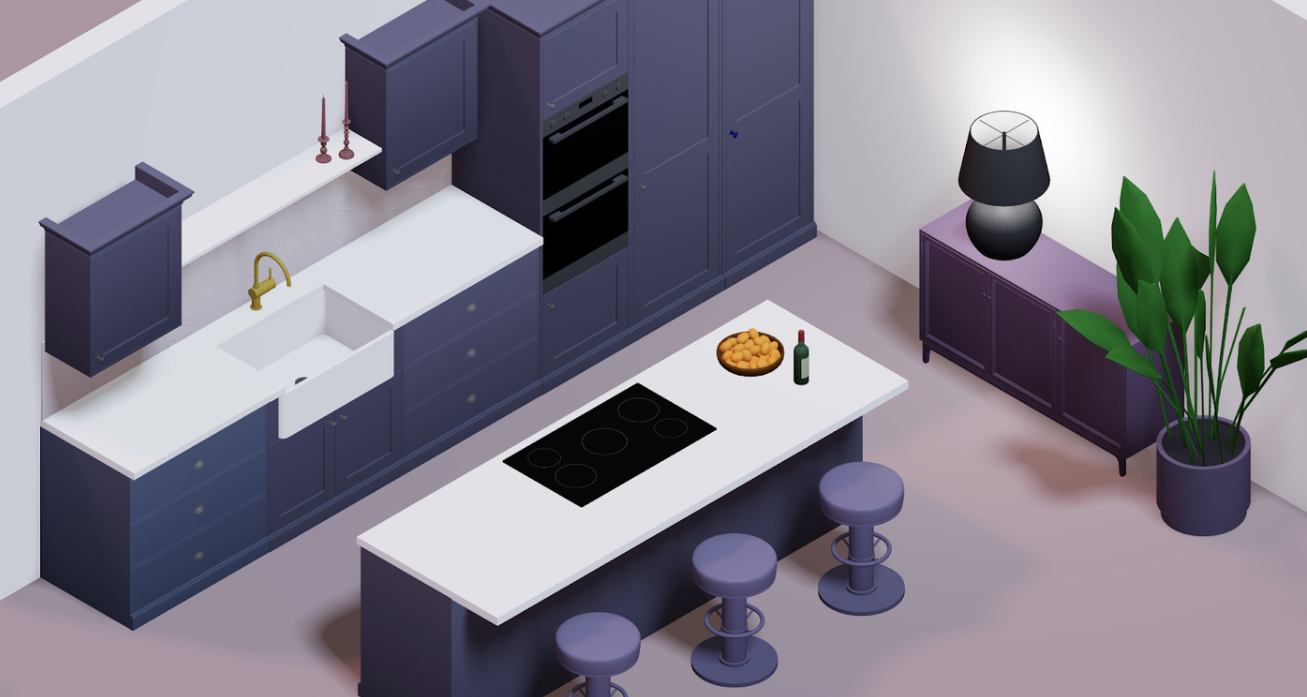
For interior designers and architects, it’s not enough to create a brilliant lighting plan – you also need to communicate it effectively to clients or stakeholders. Arcadium 3D truly shines in this regard, turning lighting plans into immersive visual experiences that clients can immediately grasp.
In my experience, using Arcadium for presentations has been transformative: it bridges the gap between a designer’s vision and the client’s imagination by letting them see and feel the lighting as if they were in the finished space.
Here are key ways Arcadium 3D enhances client presentations:
Interactive 3D Walkthroughs:
Rather than showing clients a flat floor plan with symbols for light fixtures, with Arcadium you can invite them into a first-person 3D walkthrough of the designed space. This means a client can “walk” through their future living room or office and experience its ambiance, lighting, and layout in a very realistic manner.
It’s far more impactful than static drawings – in a virtual walkthrough, the client can sense how bright the kitchen will be on a sunny morning, or how cozy the living area feels in the evening under warm lamps. Arcadium’s virtual walkthrough offers a firsthand view of the design’s lighting, allowing clients to appreciate how light and shadows play in each room, which is something 2D plans or even still renderings struggle to convey. This level of immersion helps clients emotionally connect with the design.
Realistic Lighting Visuals:
Thanks to Arcadium’s high-quality rendering, the visuals you present are richly detailed. When you show a scene in Arcadium to a client, they can see the soft glow of a lamp on the floor, the way pendant lights reflect off a countertop, or the natural sunshine pouring through a window and illuminating the floors.
These realistic lighting effects not only impress clients but also build trust – they can visualize exactly what they’re going to get. If a client has concerns (“Will this room be bright enough in winter?” or “Will these lights create a glare on my TV?”), you can address them on the spot by adjusting the model (change the sun angle to winter months, turn lights on/off) and showing the result. This creates a very transparent design process where clients feel involved and confident in the decisions.
Instant Sharing and Collaboration:
Arcadium 3D is entirely online, which makes sharing your work incredibly simple. You can generate a shareable link to your project and send it to the client – when they open it, they can view the design in their own browser, no software installation required. This is fantastic for remote presentations or follow-ups.
Clients can explore the 3D model at their leisure, walking through rooms and observing the lighting you set up. Arcadium’s collaboration features even allow clients to toggle a few things or add comments. This instant sharing is ideal for client presentations and feedback, as it removes barriers and lets the client engage with the design interactively.
In fact, Arcadium is considered “best in class for client collaboration” because it allows even non-technical clients to take a virtual tour or propose edits in the model itself. As a professional, I’ve found that giving clients this level of access makes them more comfortable and excited about the project – they become participants in the design process, which often leads to quicker approvals and fewer misunderstandings.
Multiple Presentation Modes:
With Arcadium, you aren’t limited to one kind of view. During a client meeting, you might start by showing a fly-through animation or live walkthrough highlighting how the lighting works in each area. Then, you can switch to an orthographic floor plan view right within Arcadium to discuss technical placement of fixtures or wiring zones.
You can even show elevation views or cross-sections (in Arcadium’s outline mode) to illustrate how pendant lights hang or how cove lighting is installed in the ceiling design. The ability to seamlessly transition between pretty 3D views and technical drawings helps address both the emotional and practical questions a client might have.
Additionally, Arcadium allows capturing high-resolution snapshots – so you can prepare a few still images (like a daytime vs. nighttime comparison of the living room) to include in your presentation deck or client handout.
Consistency and Confidence:
When clients see that you’ve modeled both the architecture and the lighting in one coherent scene, it sends a message of thoroughness. Everything they see – every lamp, every ray of sunlight – is part of an integrated plan you’ve carefully crafted.
This consistency builds confidence in your professionalism. Rather than presenting an electrical diagram or a conceptual mood board separately, Arcadium lets you roll it all into one. The lighting layout is no longer an abstract concept; it’s right there in the virtual space, enhancing the colors and materials.
Clients often respond with “Wow, it looks exactly how I imagined!” or “I can really picture living here now.” As a designer, that’s when you know the presentation has succeeded. It not only wins approval but also enthusiasm for the project.
In summary, Arcadium 3D turns lighting plans into vivid experiences. By enabling interactive exploration and providing life-like visuals, it helps clients understand and love the lighting design you’ve created. This significantly elevates the quality of your presentations and can set you apart as a designer who utilizes cutting-edge tools to deliver clarity and excitement. It’s a win-win: clients feel more involved and assured, and you get feedback and buy-in faster, streamlining the project moving forward.
Conclusion
Crafting a great lighting layout is both an art and a science – it requires creativity, technical understanding, and foresight. Arcadium 3D serves as a powerful ally in this process, allowing designers to unite those aspects in a single workflow.
By systematically using Arcadium 3D for lighting plans, you can transform an empty virtual room into a vividly lit space that mirrors real life, all before a single lightbulb is purchased or installed. This not only leads to better design outcomes (no surprises on site) but also enriches the collaboration with clients, who can now see the vision from the get-go.
Whether you’re an interior design professional aiming to impress a client with an immersive presentation, or a DIY home enthusiast experimenting with your living room layout, Arcadium 3D makes the process of lighting design accessible, efficient, and even enjoyable. It emphasizes the essentials – natural light placement, layered artificial lighting, and realistic visualization – so that anyone can create a practical, beautiful, and well-lit plan with confidence.
In essence, Arcadium 3D has elevated lighting layout planning to a new level. It takes the guesswork out of deciding where to put lights and how bright they should be. The result is lighting plans that are better informed and spaces that truly shine.
As technology like Arcadium continues to advance, we are witnessing a transformation in design workflows – one where great lighting isn’t left to chance, but rather designed, visualized, and perfected in 3D. If you haven’t tried it yet, it’s time to step into this illuminated future and see how Arcadium 3D can make your next project brighter and better.
Frequently Asked Questions
How does Arcadium 3D help in lighting layout planning?
Arcadium 3D provides a realistic 3D environment where you can add windows and lighting fixtures to a virtual room and immediately see their effect. It offers adjustable lighting controls (brightness, color, etc.) and real-time rendering, so you can fine-tune both natural and artificial lighting in your design. Essentially, it lets you experiment with and perfect your lighting plan digitally before implementing it in the real world.
Can Arcadium 3D simulate natural daylight and nighttime scenes?
Yes. Arcadium 3D includes an environment light (sun) simulation that you can adjust to mimic different times of day. By changing the sun’s orientation and intensity, you can see how sunlight will illuminate the space at noon versus evening. You can also turn off or dim the environment light to simulate nighttime, relying on your placed lamps and fixtures to see if the room stays well-lit after dark. This feature helps ensure your design is functional and inviting in all lighting conditions.
What types of light fixtures can I add in Arcadium 3D?
Arcadium 3D has a broad library of light fixtures. You can add ceiling lights like chandeliers, pendants, and recessed spots, as well as wall-mounted lights and floor or table lamps
. Essentially, most common residential lighting types are available as 3D models. Once added, each fixture’s brightness and hue can be individually adjusted to match the effect you want. This means you can design layered lighting (ambient, task, accent) all within the software.
Is Arcadium 3D suitable for professional interior designers’ presentations?
Absolutely. Arcadium 3D is designed with professionals in mind, offering high-quality visuals and collaboration tools. The software produces realistic lighting and shadow effects, which make your 3D model look like a photograph of a real room – perfect for client presentations. You can share an interactive 3D link with clients, so they can walk through the space and experience the lighting themselves. Many designers use Arcadium to communicate ideas to clients because it’s more engaging and easier to understand than 2D plans or static renderings.
Do I need prior experience or training to use Arcadium 3D for lighting design?
No – one of Arcadium 3D’s biggest advantages is its user-friendly, intuitive interface. It’s often compared to the simplicity of a game like Minecraft rather than complex CAD software. You can snap together walls, drop in lights and furniture, and adjust settings with straightforward controls. Most users, even those without formal design training, can get the hang of it in minutes. There are also tutorials and tips available, but generally Arcadium 3D has a very shallow learning curve. This means anyone, from seasoned designers to first-timers, can use it to create professional lighting plans with ease
Explore Our Tool

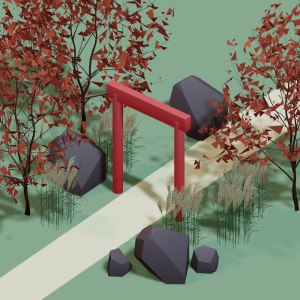 All training, tips and articles
All training, tips and articles
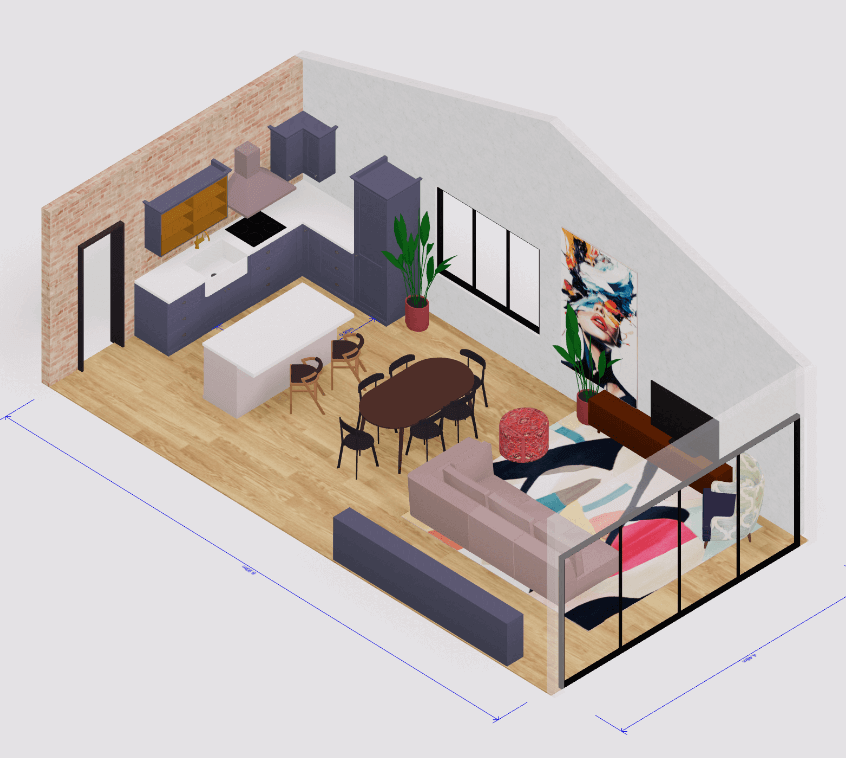 3D house design tool
3D house design tool
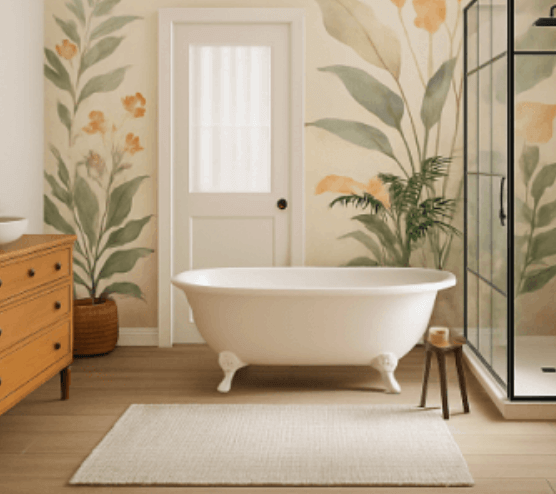
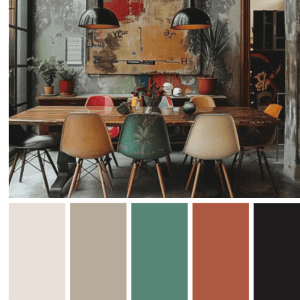 Color palette generator
Color palette generator
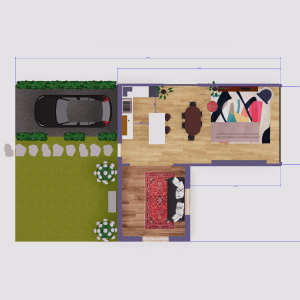 Floor plan creator
Floor plan creator
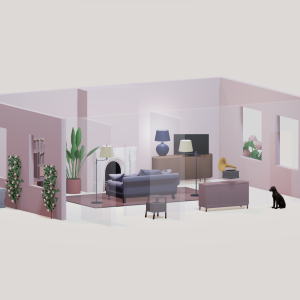 Interior design app
Interior design app
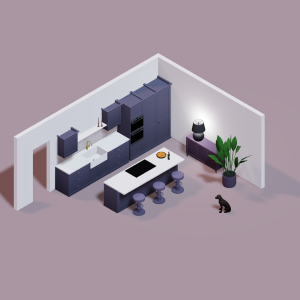 Kitchen design tool
Kitchen design tool
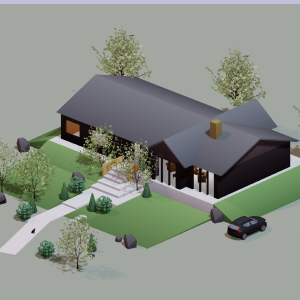 House design software
House design software
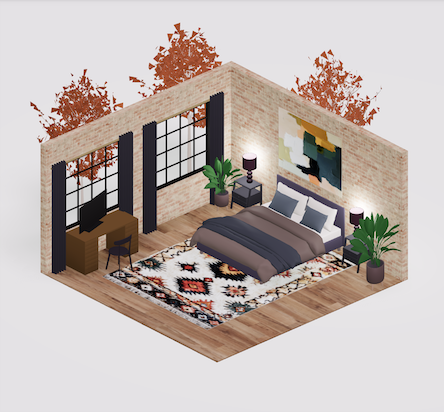 Room designer
Room designer
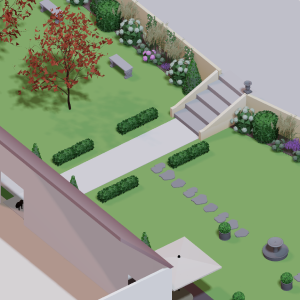 Landscape design software
Landscape design software
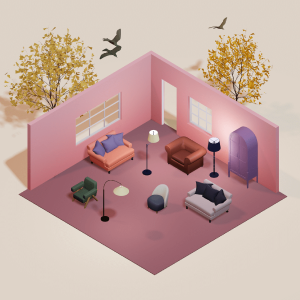 Bedroom design
Bedroom design
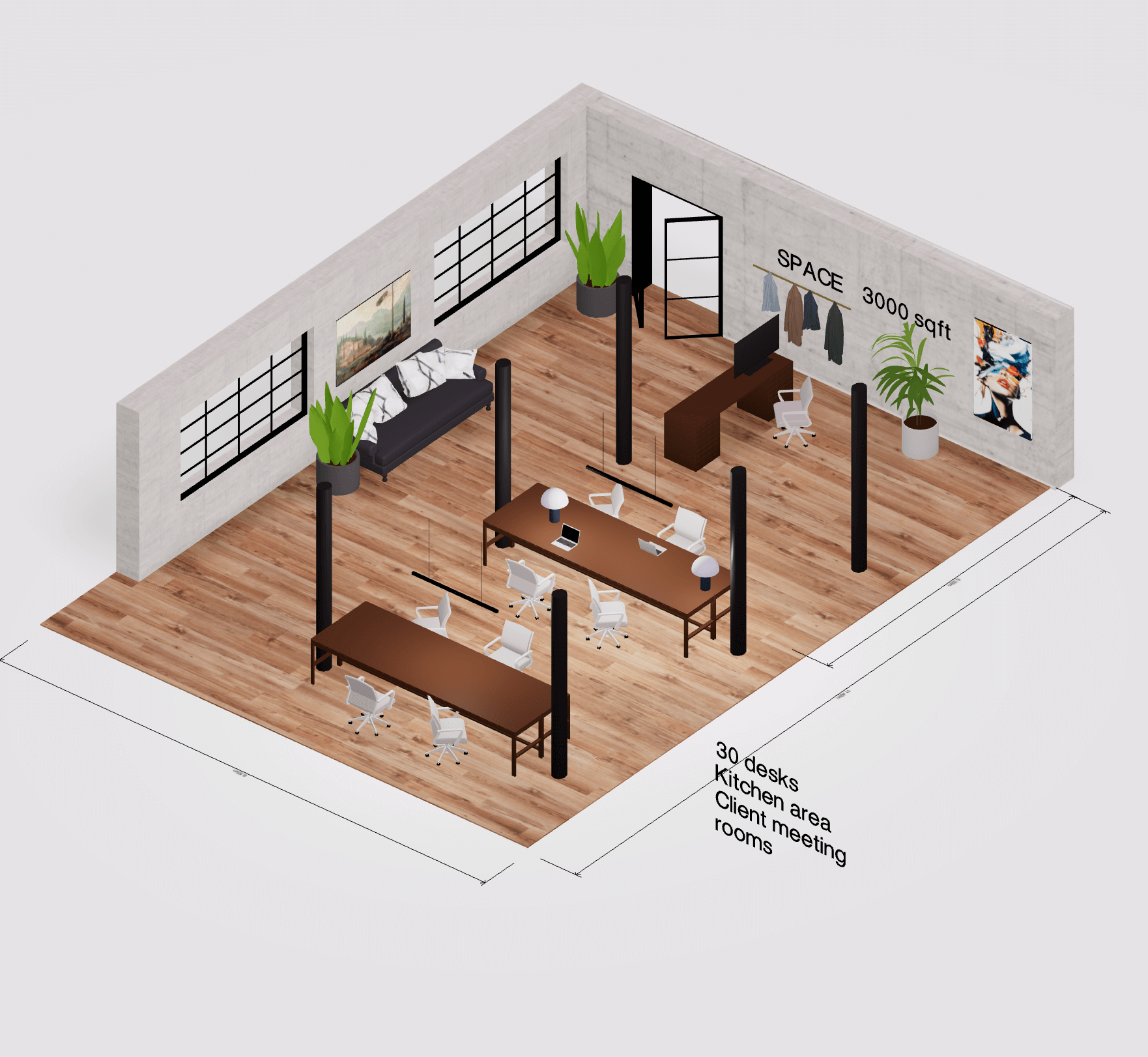 Office floor plan creator
Office floor plan creator
